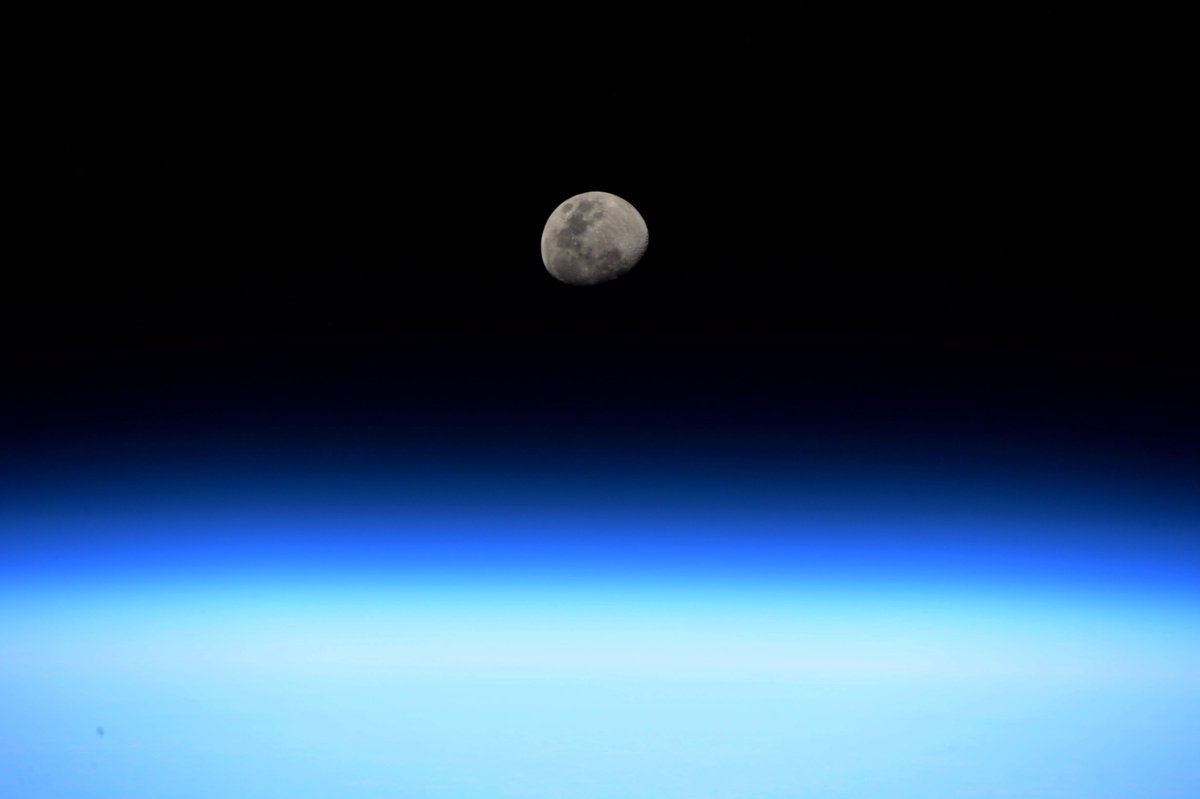[:ja]ランディ・ブレズニク宇宙飛行士がISSから撮影した月の出です。大気の青色が圧巻です。

大気圏と宇宙空間との境界は、何を基準に考えるかによって幅がありますが、便宜的に地表から概ね500km以下が地球大気圏であるとされます。大気は、温度(気温)変化を基準にして、鉛直方向に四つの層に区分されており、これを「地球大気の鉛直構造」といいます。
対流圏: 0 – 9/17km。高度とともに気温が低下。さまざまな気象現象が起こります
成層圏: 9/17 – 50km。高度とともに気温が上昇。オゾン層が存在
中間圏: 50 – 80km。高度とともに気温が低下
熱圏: 80 – 約800km。高度とともに気温が上昇。外気圏との境界は熱圏界面
参考文献: Randy Bresnik’s Tweet
ウェブ地球儀で地球俯瞰画像を見る: LiVEARTH
[Earthview Wonders] No.309: Moon Rise
Astronaut Randy Bresnik captured from ISS breathtaking Moon rise. Blue color of the atmosphere is also stunning.

For convenience, altitude lower than 500km is considered Earth’s atmosphere in general. Earth’s atmosphere consists of a number of layers that differ in properties such as composition, temperature and pressure.
Troposphere: 0-17km. extends from the surface to the bottom of the stratosphere
Stratosphere: 17-50km. contains the ozone layer
Mesosphere: 50-80km. wherein most meteors burn up
Thermosphere: 80-800km. temperature increases with altitude
Reference: Randy Bresnik’s Tweet
See earthview photo gallery with web-globe: LiVEARTH[:en][Earthview Wonders] No.309: Moon Rise
Astronaut Randy Bresnik captured from ISS breathtaking Moon rise. Blue color of the atmosphere is also stunning.

For convenience, altitude lower than 500km is considered Earth’s atmosphere in general. Earth’s atmosphere consists of a number of layers that differ in properties such as composition, temperature and pressure.
Troposphere: 0-17km. extends from the surface to the bottom of the stratosphere
Stratosphere: 17-50km. contains the ozone layer
Mesosphere: 50-80km. wherein most meteors burn up
Thermosphere: 80-800km. temperature increases with altitude
Reference: Randy Bresnik’s Tweet
See earthview photo gallery with web-globe: LiVEARTH[:]